A conversation with Benjamin Passione
by Elizabeth Johnson, edited by Matthew Crain
A conversation with Benjamin Passione
by Elizabeth Johnson, edited by Matthew Crain
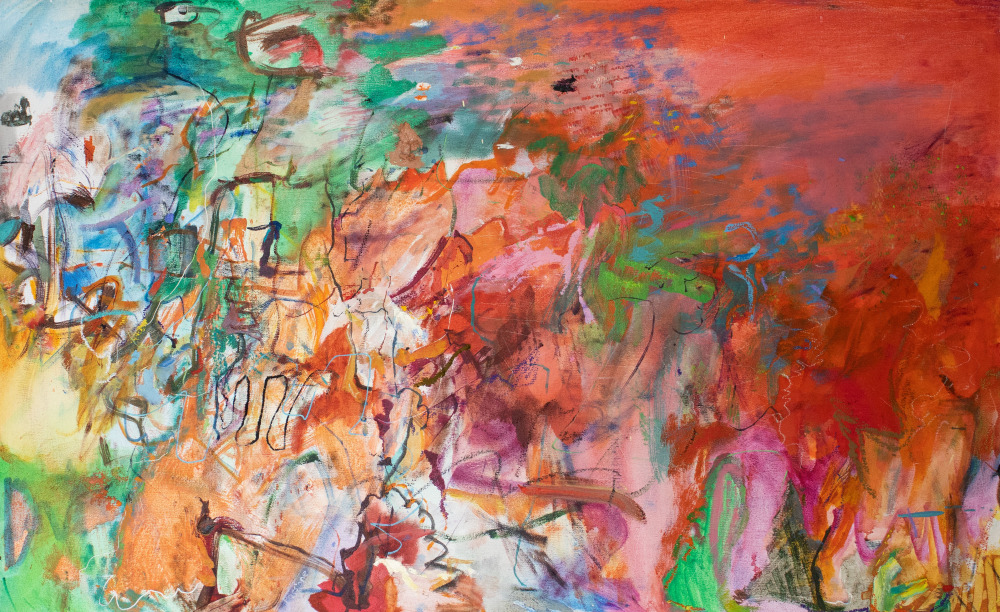
ART SYNC: THE BAOBAB TREE
A conversation with Benjamin Passione
by Elizabeth Johnson, edited by Matthew Crain, 2022
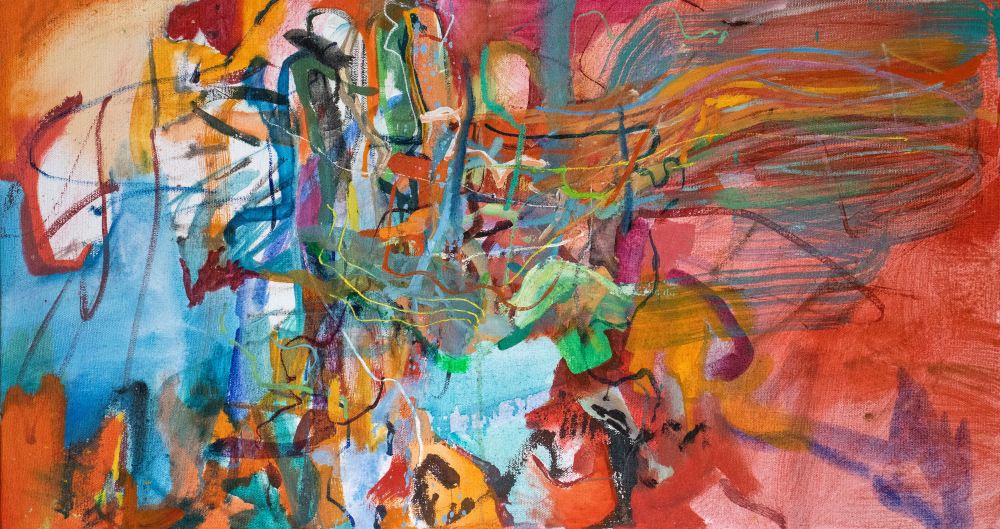
Landscape In Red, 13 1/8" x 24 3/8", Oil On Canvas
Elizabeth Johnson: The press release for All the Sauce, your 2019 show at Gross McCleaf states: “Passione’s paintings benefit from a vitality born from the means of their finding: handmade, felt, visual, and free from singular meaning.” Has your process of “finding” changed since then?
Benjamin Passione: The paintings from that show were a little bit opaquer and denser, very bright and immediate with the color. They were a little darker and acidic. The newer works are a little lighter, sketchier, and scumbley, a tad bit more playful and less serious. These paintings are my quarantine/Covid pictures. They are escapism for me. Hopefully, they are calming and fantastical.

Cornucopia, 24 9/16" x 32 1/8", Oil On Canvas
EJ: The same press release describes your work as “striving,” as “straining for non-verbal possibilities,” and “nonverbal in complexity and nuance.” Where are the strong forces that motivate you to draw and paint rooted? Are they inside or outside yourself? Do these forces channel you towards as a playful, aesthetic work ethic instead of a verbal one?
BP: Desperation and anxiety with some inspiration sprinkled in drive me. All children paint and draw and dance. But it is slowly taken from them, through shame or guilt. Holding onto ungraspable truth and innocence now comes across as desperation, like the Peter Pan Syndrome. It’s like the wind you can always feel but never touch. My inspiration runs both inward and outward and is also what is in between. I look to infinite possibilities in infinite directions.
EJ: You name James Castle––I love his work––as one of your current influences. Which of his works stand out to you? And is there a difference between someone who is considered an outsider artist and the rest of us that went to art school?
BP: I really love his work. Particularly the charcoal/spit and matchstick drawings of interiors and the landscapes and the assemblages of everyday items. I really love the assemblages of birds; they just make me feel happy and bring warmth to my body and fuel for life. In my opinion there are only two types of artists: good ones and not so good ones. I give a leg up to outsider artists over academics. Academics have had the conformity beaten into them. They were taught the “proper” way. They want to belong in the art world. Outsider artists create their own world unto themselves for their own sake. Or at least James did: his world was a necessity, not luxury.
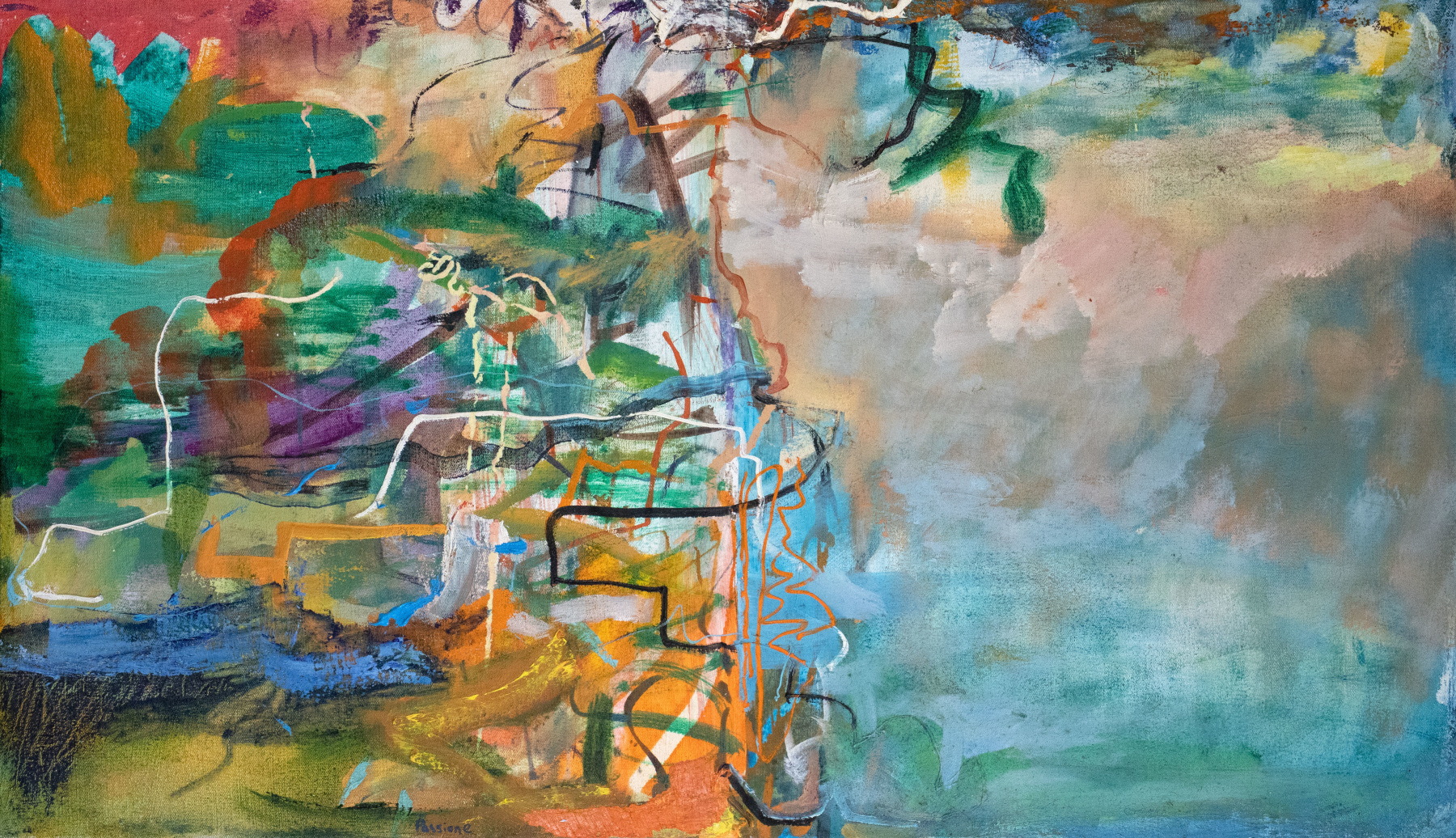
Sunset In Mist, 14 1/8" x 24 9/16", Oil On Canvas
EJ: In an email you said, "My work is impulsive and improvised yet grounded and academic.” What are the parts that are grounded and academic to you?
BP: Grounded and academic. I mean, maybe, maybe not––I don't know. Grounded is a little complimentary and academic is a little self-deprecating. It all depends on what perspective you are coming from. They could be seen as very conservative, i.e., oil on canvas, pretty colors not meant to offend, like, “I like your painting, it matches my couch.” That vibe. They are academic through emphasis on composition, variety of mark, color, tone, space, texture, line, shape, and form. Really a back-to-basics approach, a slow render. They're not some wild installation art or performance piece or something like Yves Klein selling invisible paintings.
EJ: The Sauce statement describes your practice as: “he paints very slowly, usually over years, responding to each painting, allowing them to dictate what they will become.” Did you learn to slow down as you have matured as an artist? Or have you always had the wisdom to respect your inner timetable?

Homage In Red, 11 9/16" x 15 1/8", Oil On Canvas
BP: I paint slow because I have no idea what I am doing. I must render them very slowly, listen closely, let the tension build and strike when I can. I must take my time and not force it. But I do wish I had the confidence for speed. I would love to paint like Van Gogh: at the height of his power, he was making eighty paintings in a month, almost three a day. Wow. How much fun that would be! It's the uncertainty for me that causes the delay.
EJ: I am enjoying your drawings on Instagram. Do they inspire you to paint? Do the two worlds overlap? Do the drawings, which resemble stars, planets, living cells, and organic growth, foster a permissive daydream that carries over into painting?
BP: They do overlap but they’re doodles, not “studies for a painting.” They let me turn my brain off and just start making marks on the page. Like Jackson Pollack's psychoanalytic drawings, which I really enjoy. Drawing is like opening a faucet from your brain that allows time, emotion, and medium dictate the picture. The creative process of my drawing and painting are very similar, but drawing allows more varied levels of freedom, it makes it easier to explore tangents. I get to see how close I can fly to the sun. So, yes, drawing is a permissive daydream. But sometimes it’s a nightmare: it’s growth and death, the predator and the prey.
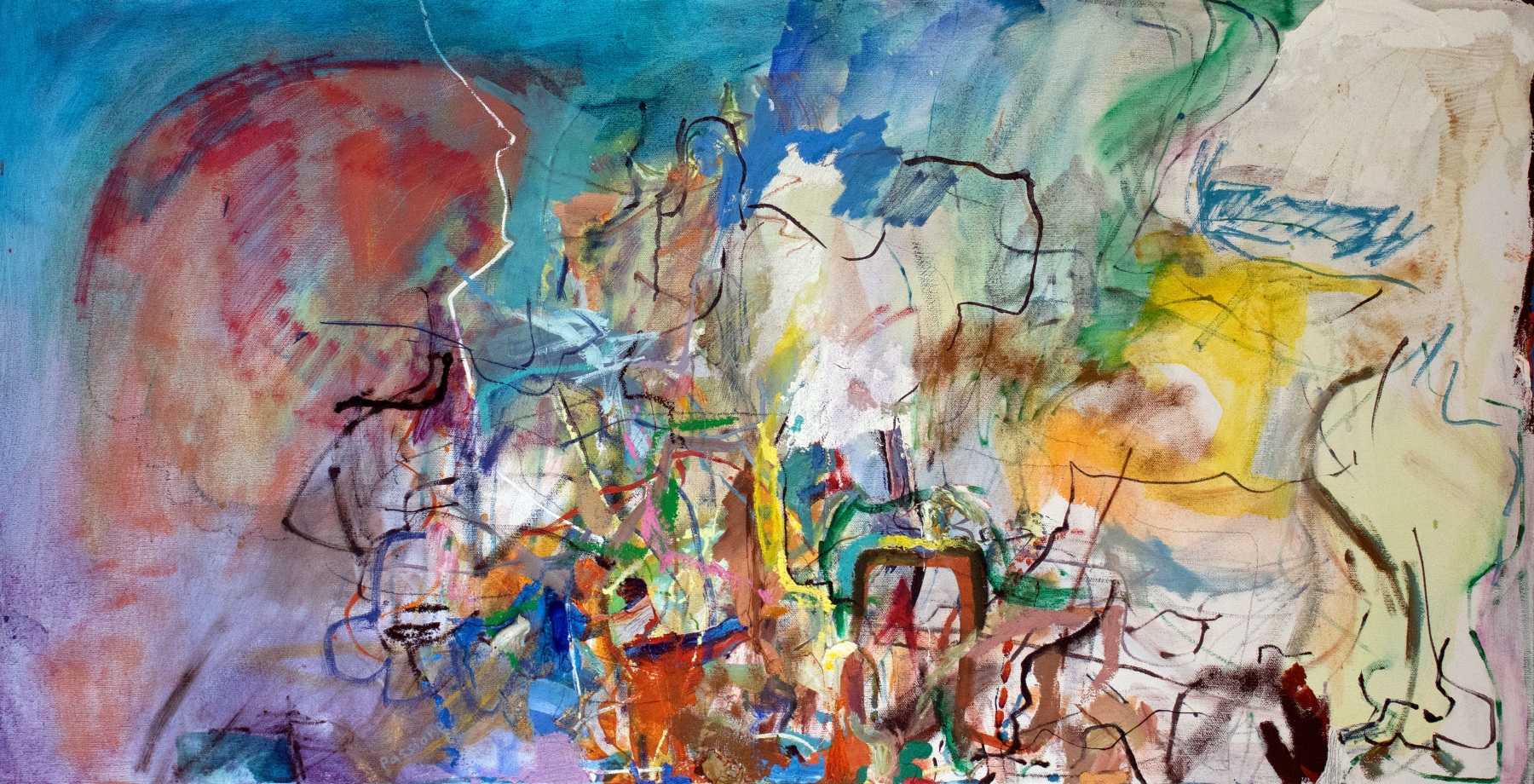
Smoking Out The Window, 19 1/8" x 37 1/8", Oil On Canvas
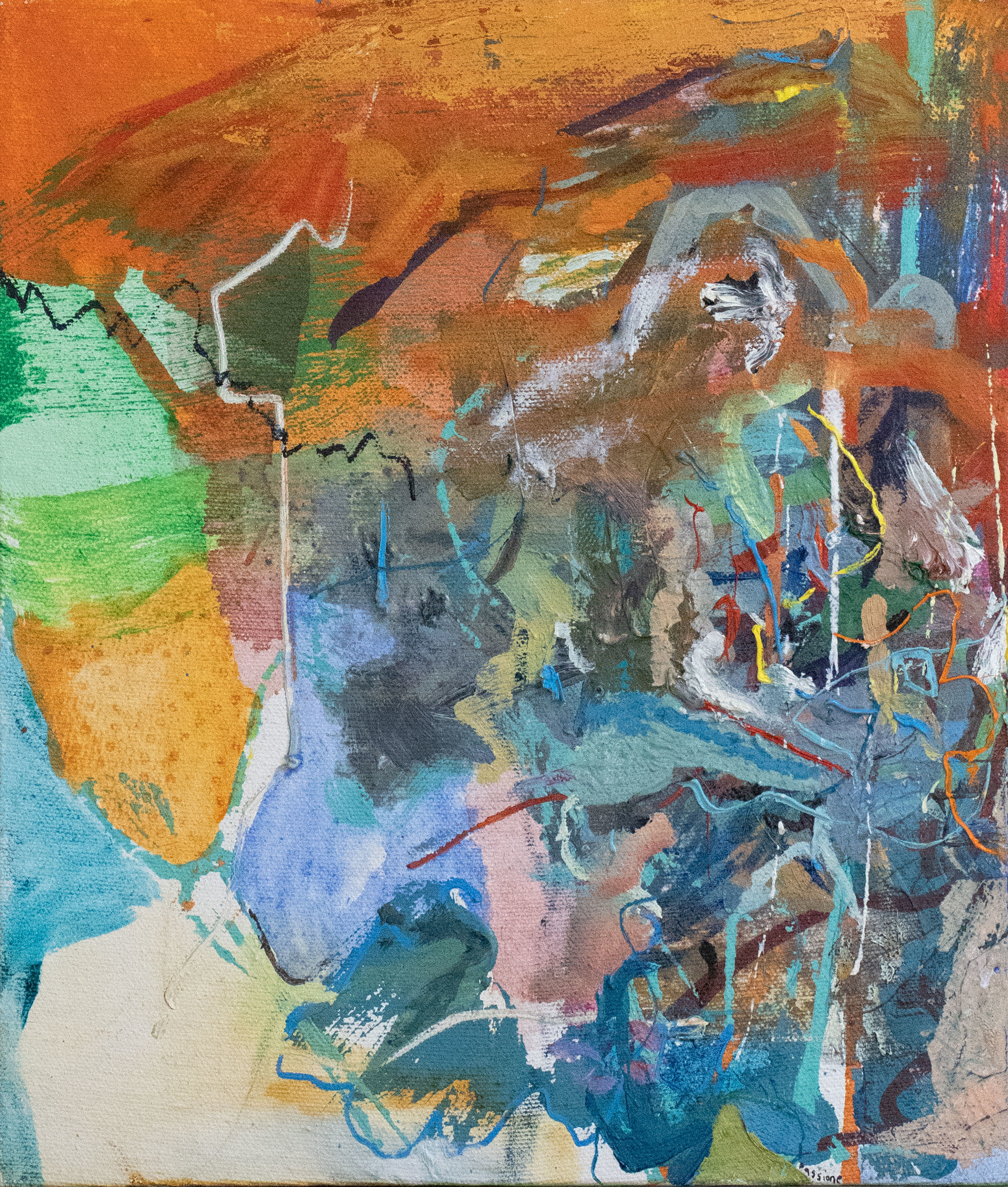
Always A Pleasure, 11 9/16" x 10 9/16", Oil On Canvas
EJ: I like that you mention Jackson Pollack, especially because his early work was valued less as powerful statements in themselves, and more for prefiguring his drip paintings. What’s the attraction for oil painting if you can do so much with drawing? Are you challenging yourself to stretch and wrestle with oil paint––and by extension the art world––that has historically favored oil painting? Do you like the way oil painting distills the moves you discover in drawing?
BP: Oil painting is the easiest medium for me to work with. I find it much more flexible than acrylic. Easier to get the color right. And a hell of a lot easier than watercolor. Oil painting has some kind of “mystique,” it’s seen as harder or more proper. But I find that the slower drying time gives me more options. I do sometimes start my paintings with acrylic and then switch to oil to finish them. It can help expedite the process. The difference between painting and drawing . . . –– I’m not sure there is a difference; I mean, I do draw on paintings, usually just with paint; and I use washes in my drawings, usually with transparent markers and or India ink. I think Giacometti is the best example of drawing with paint and/or painting with a drawing.
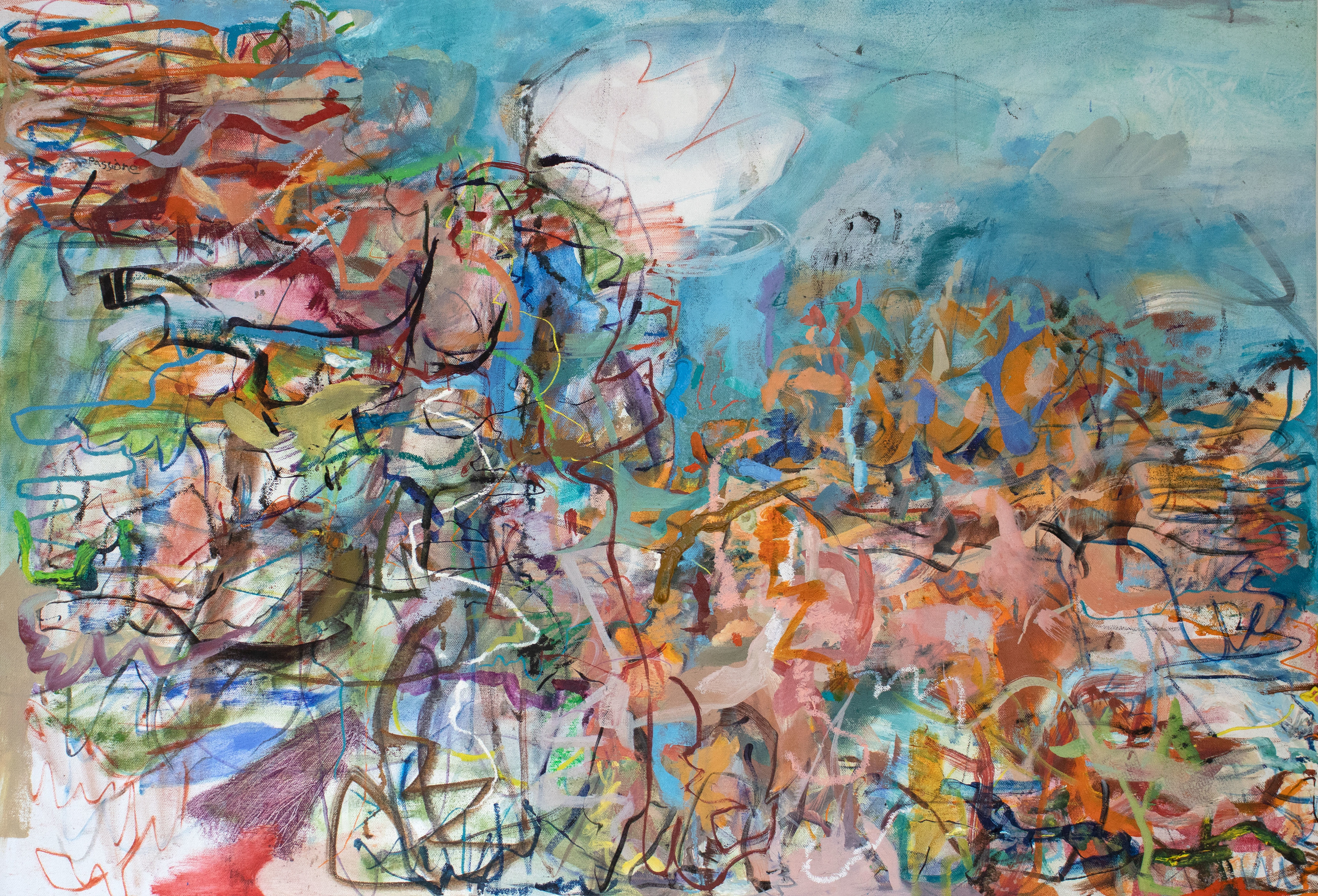
Quarantine Sketch Lake Day, 24 5/8" x 36 1/8", Oil On Canvas
EJ: I see two worlds in your drawings: phantasmagorias à la Robert Williams, S. Clay Wilson, and the outsider art of Martín Ramírez, Adolf Wölfli. In a sense, you bridge the outsider art world and the Zap Comix world in feeling. Were comics important to you as a kid?
BP: I had maybe four or five of them. I mostly just liked to draw from them try to copy the characters. I did watch a lot of cartoons. I loved when the cartoon characters would get into a fight and would become a sort of tornado spinning around with random fists and limbs popping out. I would also copy sports cards, and landscapes from calendars in a Bob Ross/Claude Monet style. I do really like Martin Ramirez and Adolf Wölfli. Also, Henry Darger.
EJ: Your drawings make me think of a marbled paper joined with the building structure of Tinker Toys or Legos. Can you describe how your drawings begin? And how they evolve? Does daily life get woven into them?
BP: Full disclosure: yes, my son does leave his Legos everywhere; yes, I have seen Moana at least a hundred times. And I really enjoy the sculptures of Matthew Ronay: I can see a lot of his influence in my drawing. I am a complete sponge, and it sometimes seems like I almost have no say in the matter. I used to have a studio near an abandoned, graffiti-covered train station. I loved to watch the ways the walls evolved; new tags, new colors, different shapes; the styles were always changing: it was never finished.
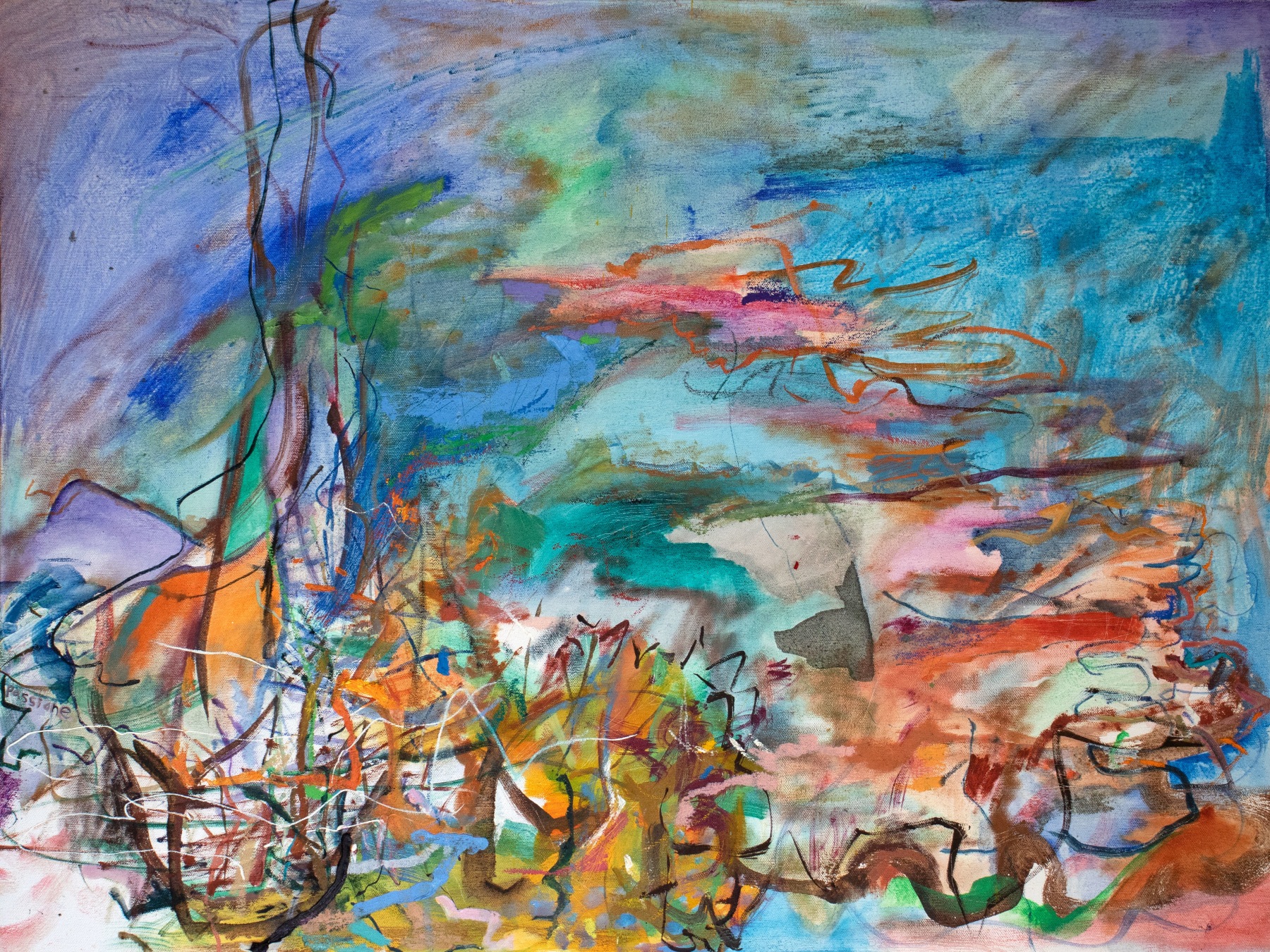
By The Lake, 32 7/8" x 24 9/16", Oil On Canvas
EJ: I mention marbled paper because your designs feel to me like they have bubbled up and been flattened on a glass-bottomed floor, which is the drawing surface. Are they a kind of automatic drawing that could fill all the space? Do you consciously leave empty space to make them easy for the viewer to enter?
BP: My drawings are more personal and completely selfish. I don't consider the viewer at all. Drawing is a way to get some energy out, it’s more anxiety-ridden than painting. I take an automatic approach, yet I do add various pauses and breaks for variety.
EJ: If 1) your painting is built from chaos and ruptures in style, and 2) you try to let it dictate how it will develop, and 3) it vents energy: does it protect you from outside art influences? For instance, qualities of Paul Klee and Wassily Kandinsky are present, but they are transformed by your process. Is resisting direct influence baked into your abstractions?
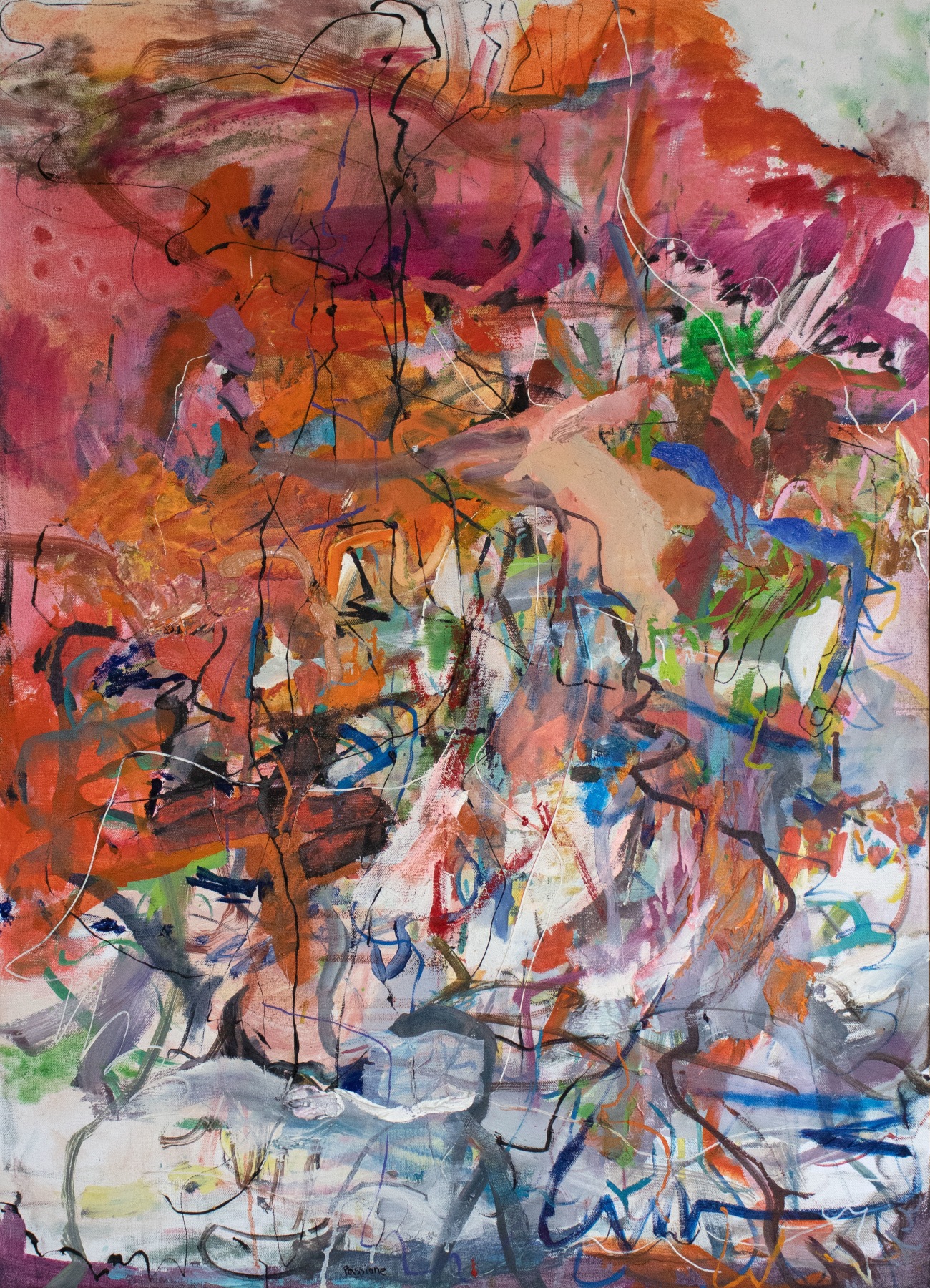
Chickenhawk And The Hen, 34 1/8" x 24 5/8", Oil On Canvas
BP: I would say almost the opposite. I accept direct influence. When I was a child, my father bought me H. W. Jansen’s History of Art at the flea market. Images of Paul Klee's Twittering Machine and Wassily Kandinsky's Sketch I for composition VII changed me forever. The images are permanently seared into my brain.
EJ: Your drawings recall Antoine de Saint-Exupéry’s book, The Little Prince, a story that is considered highly idealistic, philosophical, and a criticism of society. Is your work idealistic? Does it contain notions of kindness, charity, or the social contract?
BP: Abstract art has been criticized––and properly so––as escapism and problematic, especially because American capitalists propped up Abstract Expressionism and poo-pooed social realist artists such as Ben Shahn and Frida Kahlo. I don't think my work is informed by kindness or charity or is part of a social contract. It’s used as a shield against the world and a form of protection. A way of survival. I create brief moments of joy, but I’m definitely not a social worker or a public school teacher. I do relate to the character of the little prince: always trying to please but always failing. I do feel like I drew the boa constrictor eating the elephant and everyone saw the hat and then I repeatedly tried to draw the sheep but then gave up and just drew a box and said the sheep was inside. I feel like my art is the baobab tree: it keeps growing and I can't get rid of it.
––Elizabeth Johnson
edited by Matthew Crain
March 2022

Devil May Care, 32 1/8" x 24 9/16", Oil On Canvas